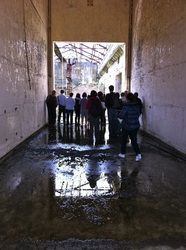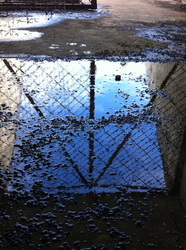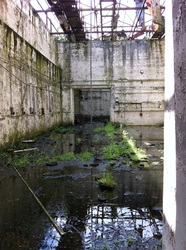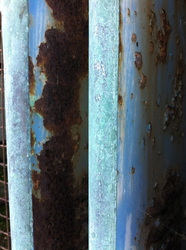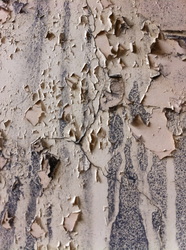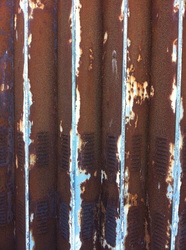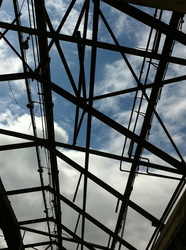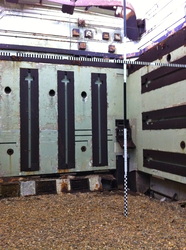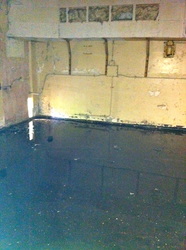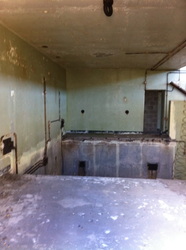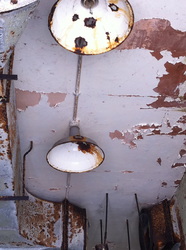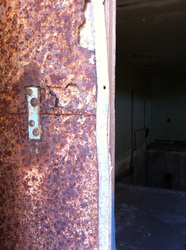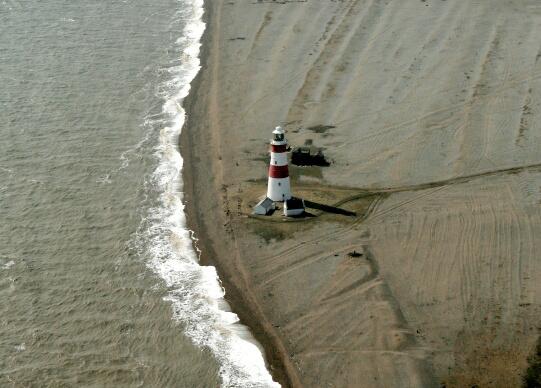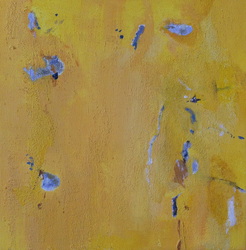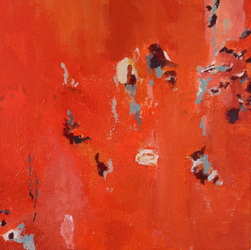|
Last summer I took part in an artists walk and talk visit to the AWRE site at Orford Ness with the artists Jane and Louise Wilson, who showed their work Blind Landing as part of Untrue Island, referring to the Blind Landing Experimental Unit there during the Cold War. The work made great use of the space with a series of site specific installations, using measuring sticks together with captured sound, (the measuring sticks were those used as a measure for scale in the building of film sets). The pieces are set in the old laboratory buildings, 'challenging the sense of scale and ruin, pointing to the architecture of forensics and camouflage, and highlighting their historic relevance as future ruins.' http://www.nationaltrust.org.uk/article-1356392567173
The site was fascinating to explore, with its previous use as an atomic weapons research site, it has its sinister side and still seems shrouded in mystery. However, what I found most fascinating was that particular sense of time and place that is embodied in its surfaces. It has made me think about the essence of place and the way that this can permeate a painting. With the deterioration of this place there is a sense of time, abandonment and loss - poignant, transient and thought-provoking - making us confront issues of mortality. The roofs of most of the buildings, having disappeared gave rise to pools of water after the recent rains - on a bright July day these blue pools seemed to contain the only element of hope - the potentiality of reflections in water - changing, moving, brighter than all the rest and when the sun fades they dim but don't become dilapidated! I wrote this at the time, meaning to put it on the blog and have just found it saved as a draft. Today Trinity House have decommissioned the Orfordness Lighthouse, the water having now got so close to the building. In this case the water is not an element of hope but one of impending damage, the shifting shingle spit a sign of possible climate change. It is sad to see the lighthouse closed, after over 200 years of use. Last summer Trinity House generously allowed me to go in and photograph it and I will soon put these pictures up here.
2 Comments
Getting work ready for the Art Fair which is on from Thursday 16 February to Saturday 18 February. The series that has been selected is Mura based on the walls of an old farmhouse where I live, which when I arrived had been derelict for about 30 years. I am including two new small paintings together with some work from 2010.
As I have continued to paint these wall blemishes I have become more interested in the effects of saturated colour and a particular pigments and less interested in the content - so the later ones have less in the way of marks and peeling paint and are more about the feeling of a patch of wall. Gaston Bachelard in his book The Poetics of Space writes of the house as a 'privileged entity for a phenomenological study of the intimate values of inside space' and goes on to say 'Transcending our memories of all the houses in which we have found shelter, above and beyond all the houses we have dreamed we lived in, can we isolate an intimate, concrete essence that would be a justification of the uncommon value of all of our images of protected intimacy?' These paintings are about attachment, to particular walls, light at a certain time of day and the shade of a colour or pigment with all its associations. The house has a beautiful quality of stillness and containing - it has been here since c.1450 in its earlier parts; I suppose I want to convey something of that stillness and being there with, despite and beyond - its concrete essence - at least having painted them I have come to think that is what I may have been trying to do! |
Archives
May 2014
Categories
All
|
